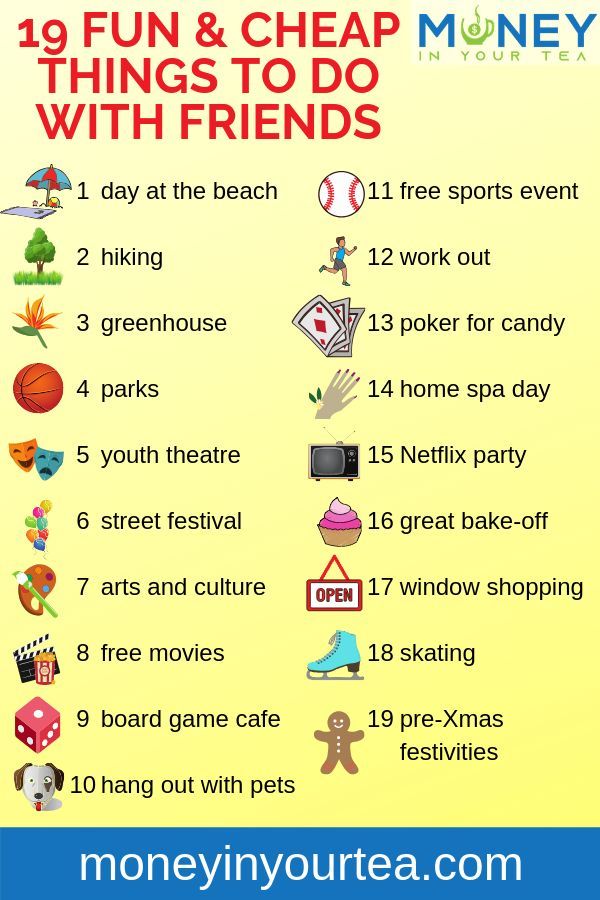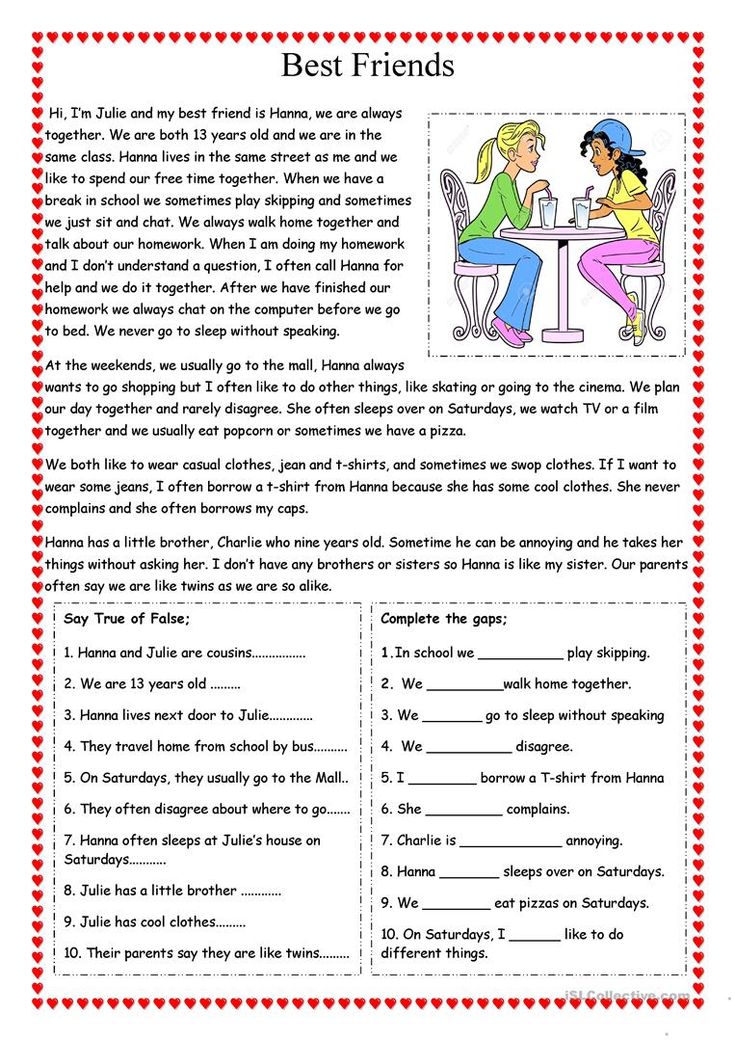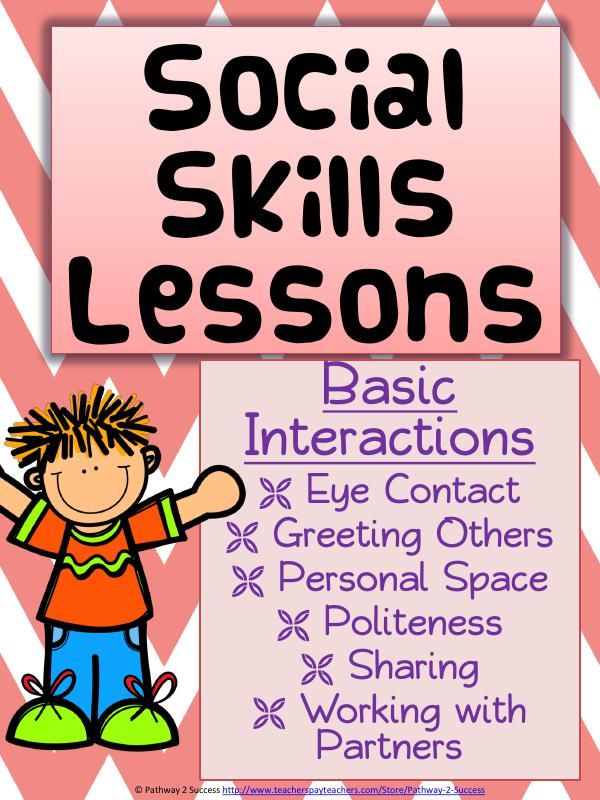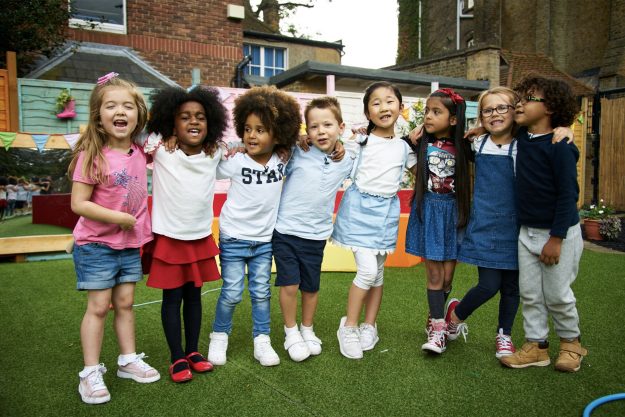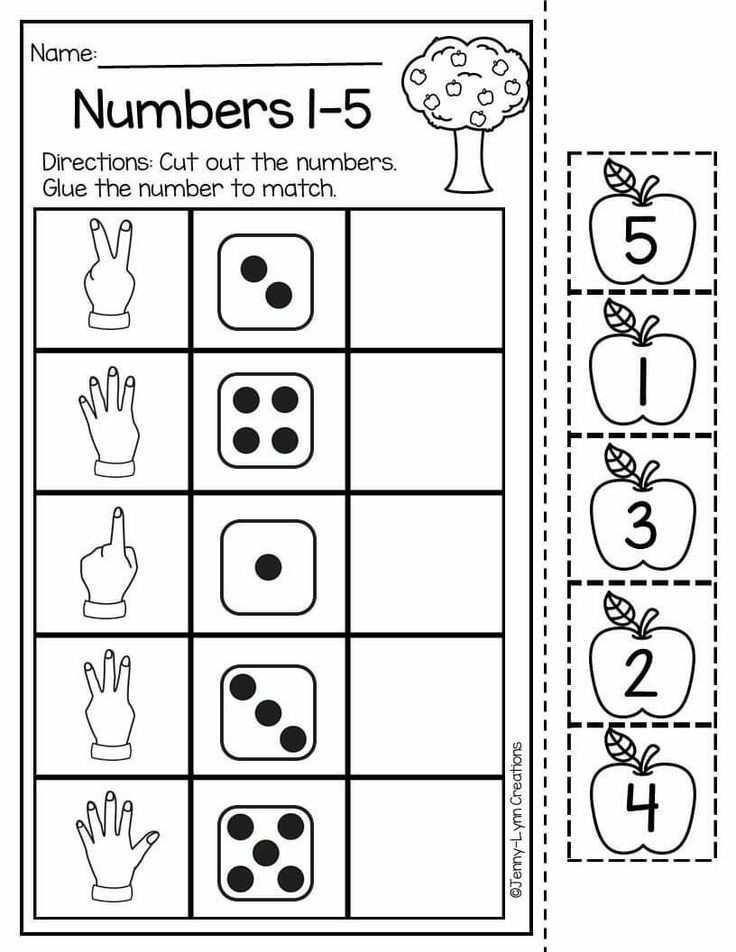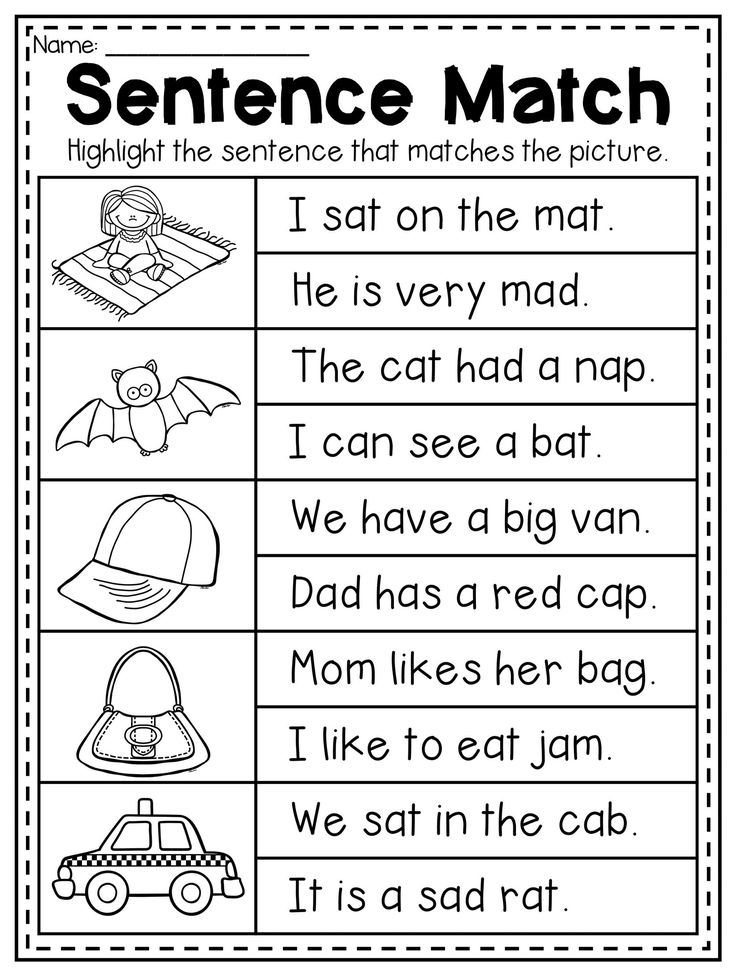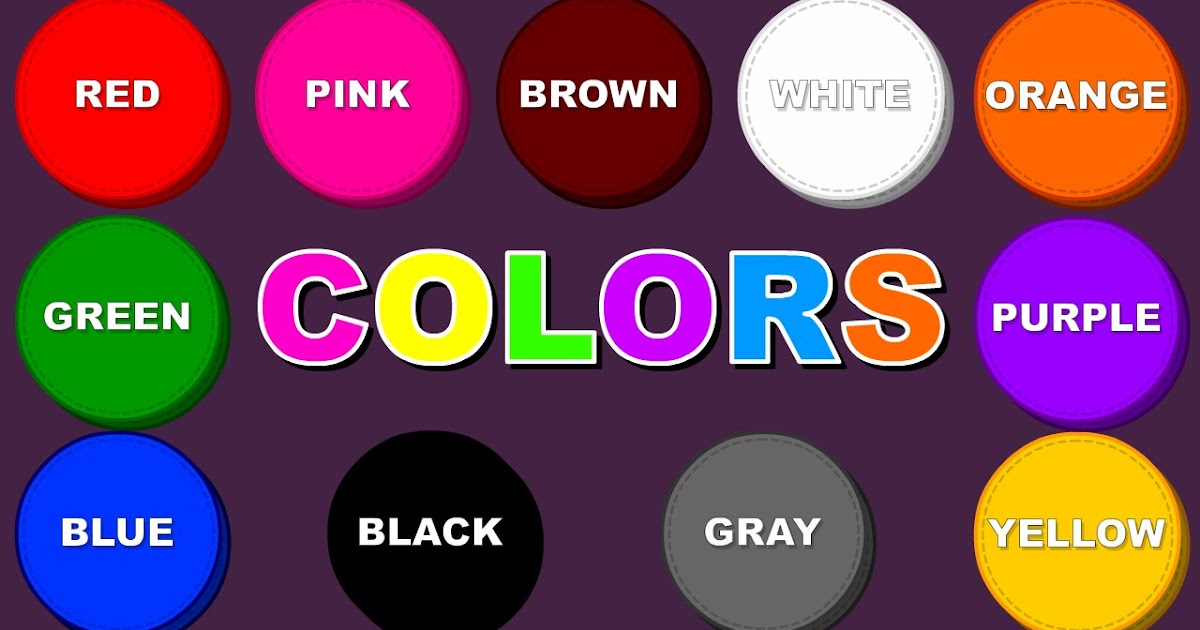Things to do with four year olds
15 activities for 4-year-olds to educate and entertain
What can we help you find? ArrowLeftRed SearchRed SearchClose
BackHere are several fun things to do with curious 4-year-olds who always want to try something new.
If you’re the parent or nanny of a 4-year old, it’s no surprise children this age have a short attention span and always seem to be in search of something to do. They’re also curious to discover new things and constantly learning. Here are several activity ideas for 4-year-olds that can both entertain and engage them.
Outdoor play
1. Sidewalk chalk
Using the sidewalk as a canvas inspires them to think big. Sidewalk chalk can also be used for hopscotch, tic-tac-toe, tracing out a roadway for toy cars or even making life-size game boards, which is the perfect combination of creativity and physical play.
2. Nature walk
A great way to make fresh air educational is a nature walk. Collecting leaves, interesting rocks or acorns can be a great way for kids to learn about their environment. Be sure to supervise that what they’re touching is not something harmful like poison ivy.
3. Sandbox
Adding a few plastic dinosaurs to your child’s sandbox for a dinosaur dig or even coins for a treasure hunt can make sand really exciting and ignite a hunger for exploration and discovery. Sand can also be one of the best activities for 4-year-olds who love building and construction.
Independent play
4. Book exploration
Letting your 4-year-old explore books is an important activity as she develops the skills necessary to read. Looking at pictures, imagining their own stories and reading aloud are all invaluable.
5. Dry erase boards
Your child can practice new writing skills or draw a picture from his imagination. Without a lot of different materials to confuse or overwhelm him, this simple activity is perfect to entertain.
6.
 Stickers
StickersLetting your child play with stickers is a great way for her to manipulate materials, develop fine motor skills and control the progress of the activity.
Creative play
7. Dough
Manipulating clay or modeling compound is an open-ended way for kids to create and express their imagination with the benefit of developing their fine motor skills.
8. Dramatic play
A few costumes or props are all that your 4-year-old needs to act out different roles such as pretending to be mommy or daddy, a chef, farmer, ice princess or whatever his growing imagination thinks of. This type of play helps him to learn about other people in the community and is a great way to introduce new vocabulary words.
9. Art
Paint, crayons, markers, pipe cleaners, tissue paper — the supplies and possibilities are endless. Providing an opportunity for your children to express themselves, their ideas and their emotions helps them develop valuable communication skills that they will use for sharing with others their entire lives.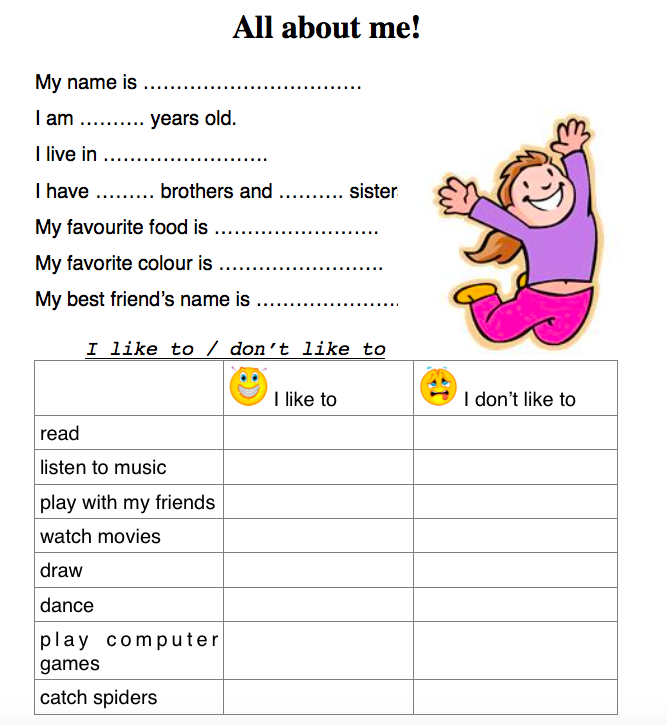
Water play
10. Laboratory
Use a few bottles of colored water to allow your children to mix and create new colors. You can also let them add dish soap or mud so they can experiment with materials and their results when added to water.
11. Washing
Let your child wash things with a bin of water, some soap and a rag or scrub brush, or even let her wash a few dishes. Although this cleaning activity could get messy, she will take great pride in the chore.
12. Ice dig
Plan ahead and freeze a few small plastic toys in water, and then let your kids dig and chip the toys out. Ice is an exciting substance to discover, and because it melts, the fun lasts for a long time.
Physical play
13. Playground
Visiting the playground in your community is a great way for your 4-year-old to socialize with other kids as well as get a little exercise to burn off some of that extra energy he has.
14. Obstacle course
For more substantial physical activity, try creating an obstacle course with a variety of different activities like balancing, hopping and running throughout your yard or local park.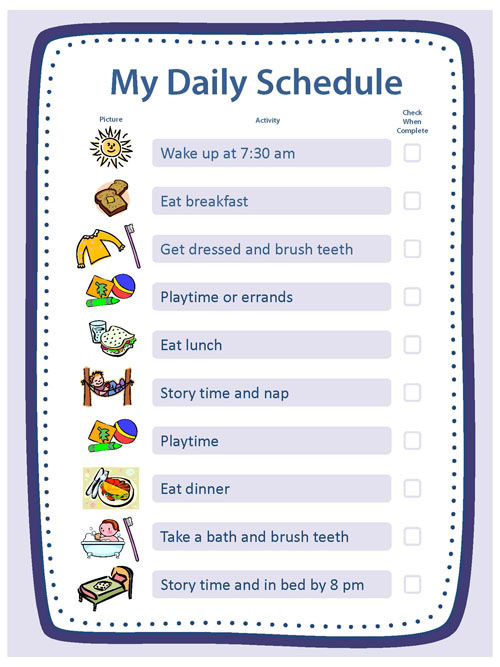
15. Sports
Whatever your 4-year-old’s favorite sport might be, sports equipment is a great way for her to be more involved in the activities that she loves. Sports can also be a way to teach sportsmanship, gross motor skills and hand-eye coordination.
Like what you're reading?
Join Care for FREE
EmailEmail is required.
Click 'Next' to start an account and get tips, tricks and trending stories.
Already Registered
The email address you entered is already registered. Would you like to log in?
Log in
Almost done!
Join Care for FREE
Create a free account to access our nation wide network of background checked caregivers.
First name
First name is required.
Last name
Last name is required.
Zip codeZip code is required.
We're sorry, your request could not be processed at this time.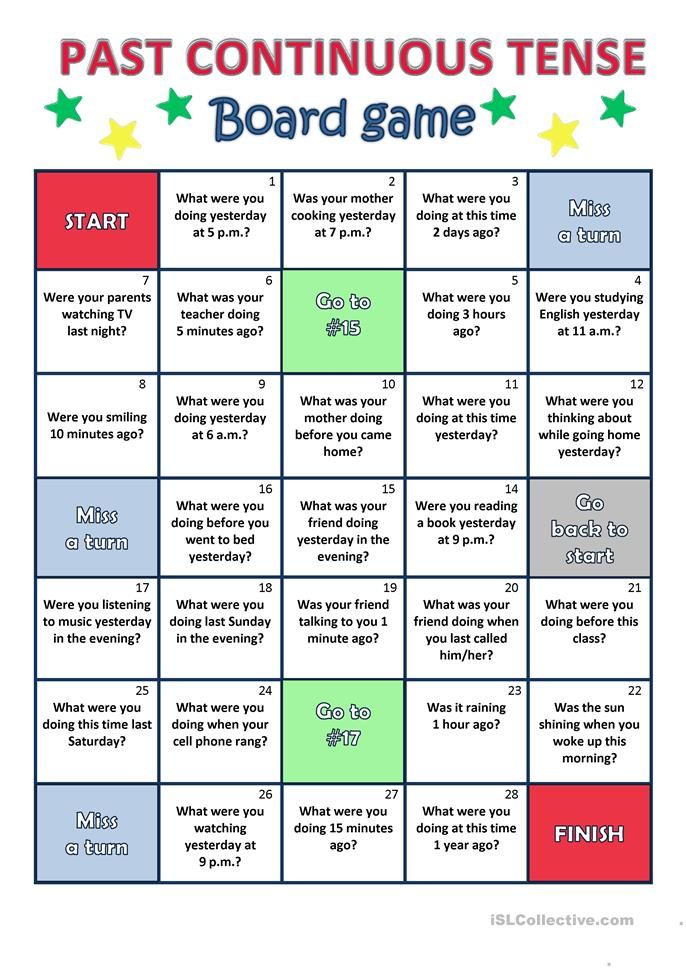 Please click here to try again.
Please click here to try again.
By clicking "Join now," you agree to our Terms of Use and Privacy Policy.
Welcome to Care!
You're on your way to finding someone your family will love.
Start now
45 Fabulous Preschool Activities for 4-Year-Olds
The days of coloring books and potato stamps are long gone. It is time to get creative with kids and help them explore the world in new ways. At 4 years old, kids start to learn more about numbers and letters, some start to write their names, they know all about colors, and show tons of curiosity about everything around them.
Indulge them in activities that promote sensory play, get them to ask questions, and add literacy to their playtime in a fun and engaging way. Here are 45 preschool activities for 4-year-olds that will keep them busy and help them learn.
1. Sprinkle Sensory Bag
This simple activity has endless possibilities and is tons of fun with all the colors and textures in the bag.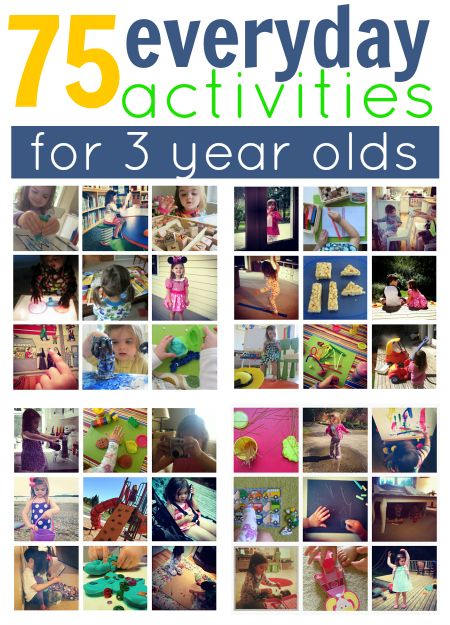 Add some sprinkles to a ziplock bag and use it as a tracking platform for little hands.
Add some sprinkles to a ziplock bag and use it as a tracking platform for little hands.
Learn More: Active Littles
2. Hiss Board Game
Every toddler parent knows you need one amazing board game on hand. Hiss is an excellent investment and kids can play it for years to come. It teaches colors and directions and the game also helps to develop analytical skills in young children.
Learn More: Gamecows
3. Floating Paintings
This fun activity is part magic and part science and incredibly easy to set up. All you need is a smooth plat and dry-erase markers. Let the kids draw a fun picture on the plate and pour some water on the plate. See how the picture gets picked up by the water and floats around.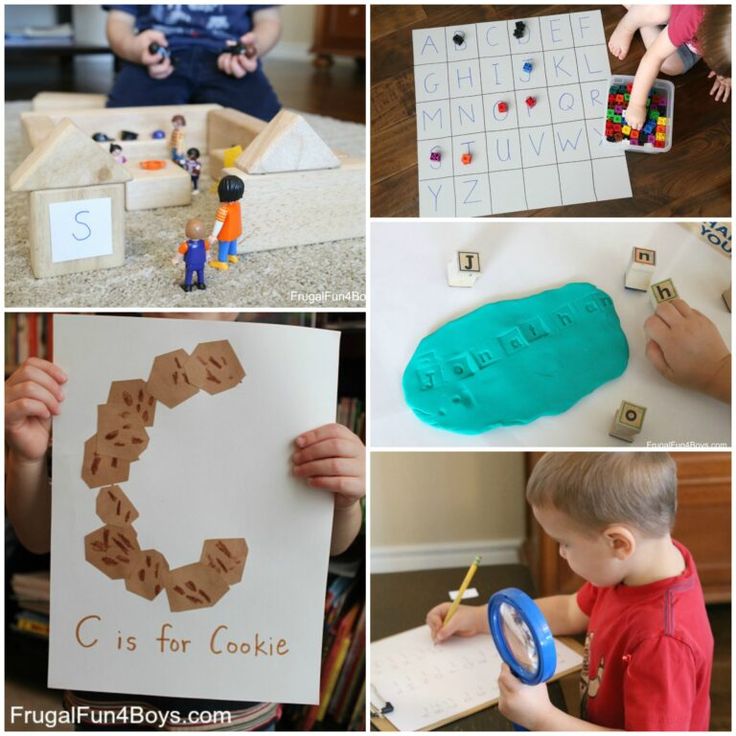 Pure magic!
Pure magic!
Learn More: TheDadLab
4. Cutting Slime
Exercising their scissors skills is an important thing to practice but most activity ideas are resource heavy and messy. With this one, kids simply cut into slime for infinite ways to practice cutting.
Learn More: The OT Toolbox
5. Squirt Gun Painting
Throw out boring painting activity plans and roll out the big guns. Or the water guns in this case. Load up some water pistols with fun water paints and let the fun begin! Let kids squirt the guns at some blank papers and see what colorful creations they can come up with.
Learn More: Fireflies and Mudpies
6. Sticky Turtle Wall
This amazing activity is perfect for curious kiddos who want to play outside. Stick some contact paper to the fence (sticky side facing outward) and draw the outline of a turtle on it in sharpie. Kids then stick all kinds of green elements to the turtle to create a masterpiece.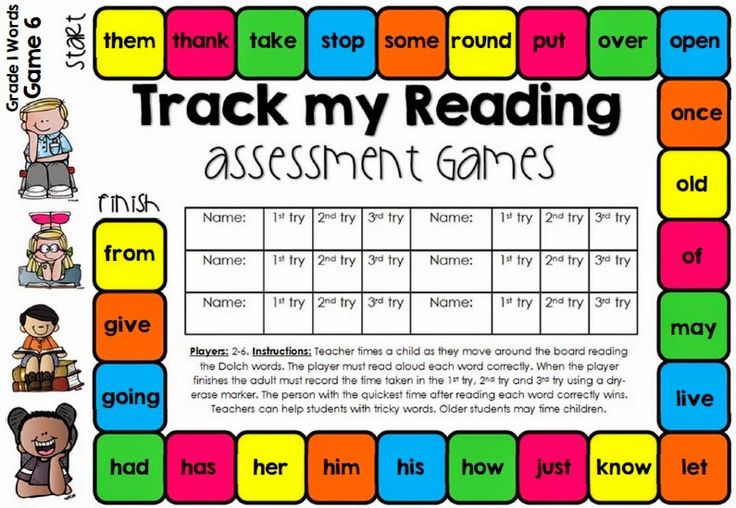
Learn More: Happy Toddler Playtime
7. Sensory Counting Bag
A sensory bag is a super fun and easy way to customize an activity. This ice cream version is ideal for counting and color recognition and can be made with things you probably already have around the house.
Learn More: Happy Tot Shelf
8. Flower Arrangement
When springtime rolls around, embrace the colors of the season with a cheery fine motor activity like this. Kids can arrange flowers in an upside-down colander, making beautiful floral creations.
Learn More: No Time for Flashcards
9. Animal Tape Rescue Activity
This fun game is another way to let kids practice cutting and develop their fine motor skills. Tape some plastic animals into a muffin tin and let the kids try to free them. You can also use string and have kids release the animals with their fingers through the complicated web.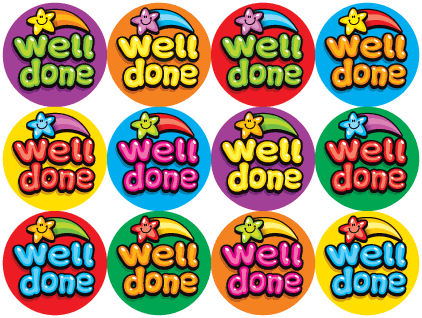
Learn More: Days with Grey
10. Toddler at Play
It seems like most indoor activities always leave a mess but this fun game only requires a piece of paper. Trace the outlines of some toys, blocks, or even kitchen utensils and let kids match the objects to the outline.
Learn More: Toddler at Play
11. Leaf Rubbing
Nothing promotes sensory skills quite like nature. All the colors smell and textures of the outside are valuable resources for kids. A simple leaf-rubbing activity puts them in touch with nature on another level, making this the ideal way to keep little hands busy if you are in a pinch.
Learn More: Social Field Trips
12. Sticker Lines
Explore this hands-on activity if you have a few stickers to spare. Draw different lines on a large piece of white paper and have your child place stickers all along the line. To make it a little more difficult, see if they can stick the colors in a pattern!
Learn More: Busy Toddler
13.
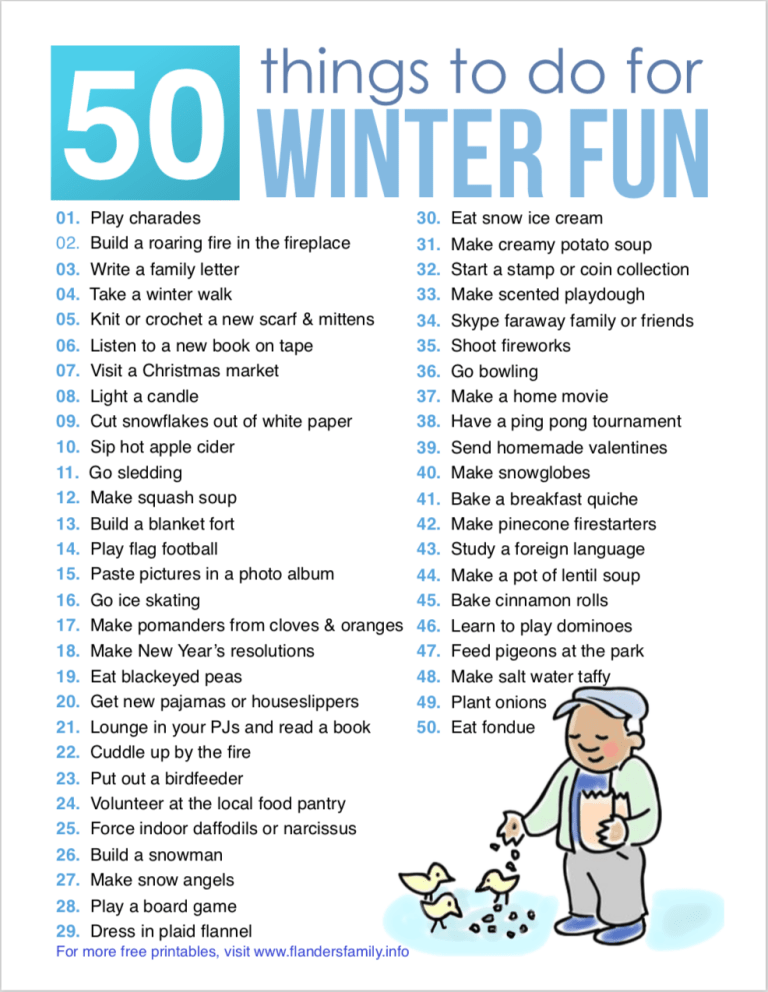 Playdough Stamp Counting
Playdough Stamp Counting Playdough stamping is an age-old kindergarten craft but have you ever thought about changing it into a counting activity? Write numbers on pieces of paper and let kids stamp the correct number of dots in the clay using building blocks.
Learn More: Frugal Fun 4 Boys
14. Pom-Pom Patterns
This activity for toddlers can be played again and again and works on color recognition and fine motor skills. Preschoolers use tweezers to place pom poms in a grid formation, guided by the template cards you provide.
Learn More: Just Teachy
15. Letter Search with Stickers
Try this easy activity to familiarise kids with alphabet letters. You can also limit it to the letters of their name or change it up using upper case and lower case letters.
Learn More: How We Learn
16. Leaf Sorting
Here is another excellent example of how your garden can be one of your greatest resources.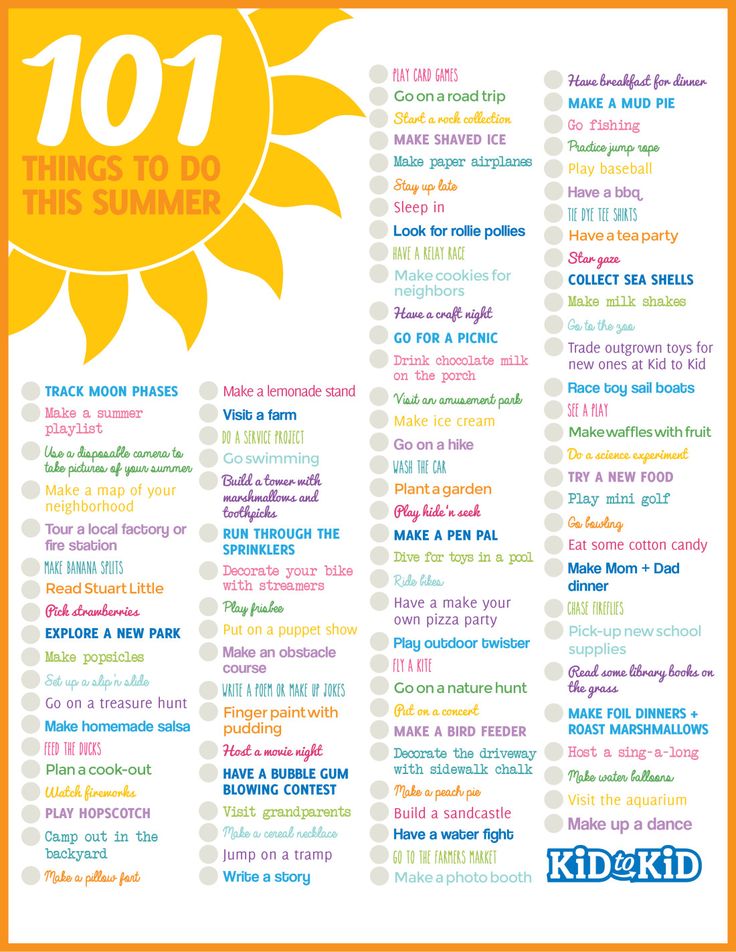 gather some leaves in autumn and have kids sort them by size, texture, color, or any other characteristics that you can think of.
gather some leaves in autumn and have kids sort them by size, texture, color, or any other characteristics that you can think of.
Learn More: Inspirational Laboratories
17. Rainbow Stacking Stones
This easy game teaches kids about colors and arranging sizes. It is fun from the get-go as you get to look for stones, paint them, and stack them. A true triple-threat activity!
Learn More: Happy Hooligans
18. Toilet Roll Haircuts
Have your toddlers shown some interest in cutting their own hair? Let's avoid that at all costs. instead, create these adorable toilet roll faces and let kids give them funky haircuts to their heart's content.
Learn More: Our Kid Things
19. Nail Painting
Another potentially messy activity can be reined in with a small adjustment. Instead of letting kids paint your or their own nails, give them these easy cardboard cutouts to decorate with nail polish.
Learn More: Play Hooray
20. Cotton Ball Painting
Paint brushes might be a bit difficult for kids to hold and finger painting gets a bit messy, so this method of painting is a happy medium.
Learn More: TP Junkie
21. Name Hop
Any game that can burn off some energy is a winner in our books! Write letters on paper plates and scatter them around, letting kids hop from one to the other. They can make their way through the alphabet, spell their name, or even practice sight words if they are at that level.
Learn More: Taming Little Monsters
22. Utensil Printing
You can turn nearly anything into art with some colorful paint and a little imagination. In this case, your stencils are simple kitchen utensils that leave fun patterns. See what kind of creative flowers your kids can come up with.
Learn More: Fantastic Fun and Learning
23.
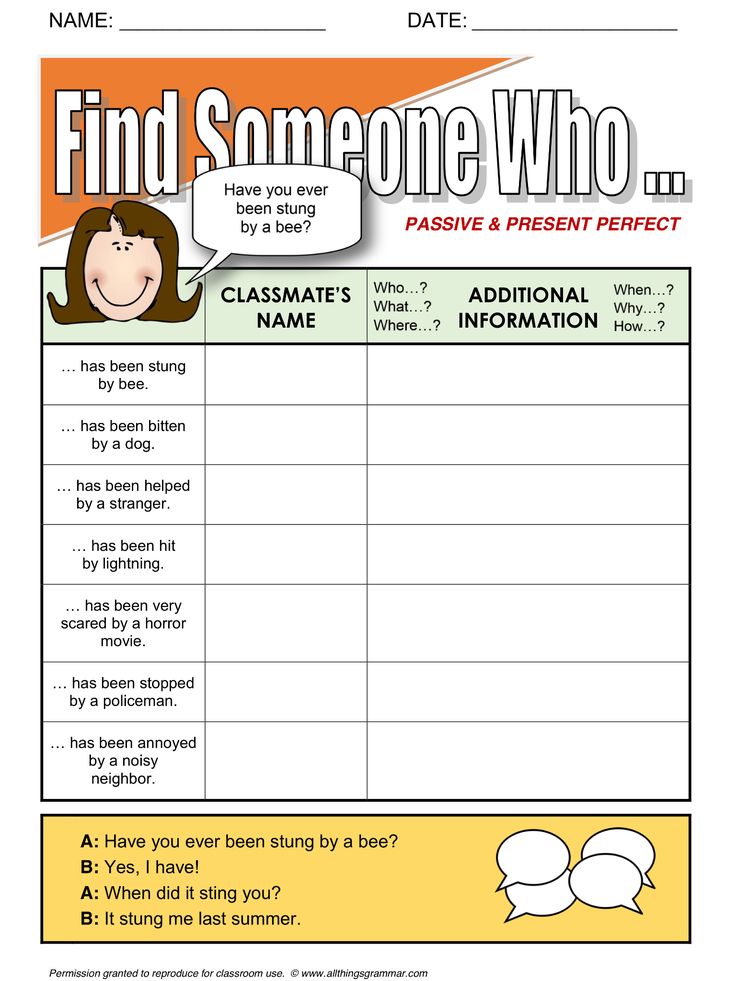 Flower Petal Name Practice
Flower Petal Name Practice Staying on the garden theme, this simple activity lets kids practice spelling out their names. Add this to their daily routine and let them practice laying the petals in the correct order when they wake up or just before bed.
Learn More: A Dab of Glue Will Do
24. Number Search Sticker Activity
There is seemingly no end to the things you can do with some stickers and a sheet of paper. Write down some numbers and assign each a color. Kids then search for the numbers and put the right colored sticker on each. Once they are done, they can write the number on top of the stickers again for extra practice.
Learn More: Stay At Home Educator
25. Sticky Yarn Numbers
It is important to practice writing but simply adding numbers and letters to a fine motor activity is an easy way to help kids with recognition too. With some glue and yarn, kids can have lots of fun while learning.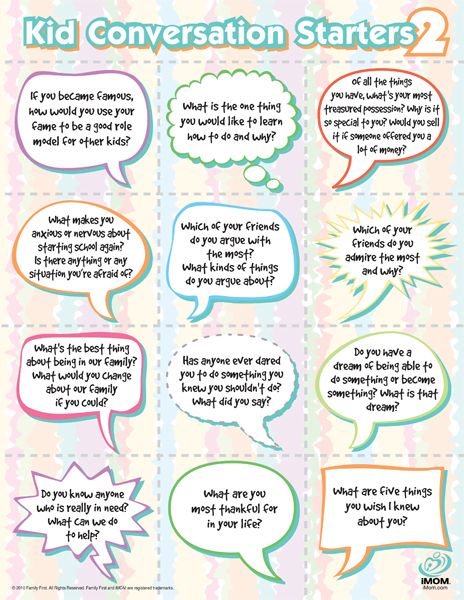
Learn More: Blog Me Mom
26. Make Counting Hands
It's natural for kids to count on their fingers but how about letting them count on someone (or something) else's fingers? Fill some gloves with beans or grain to make fun counters. With a roll of the dice, kids can count on their new favorite math resource.
Learn More: J Daniel 4s Mom
27. Ribbon Threading
Even the simplest of activities can have great benefits in the development of kindergarteners. Let them thread different ribbons through an oven rack and see how it becomes a test of patience rather than skill.
Learn More: Happy Brown House
28. Salt Dough Dinosaur Fossils
Making salt dough is a classic activity for kids but making fossils out of your dough balls is something you might not have thought of before. Imprint plastic dinos into the clay and let them dry. Kids can even dig them up in the garden later if you are feeling adventurous!
Learn More: Mom Brite
29.
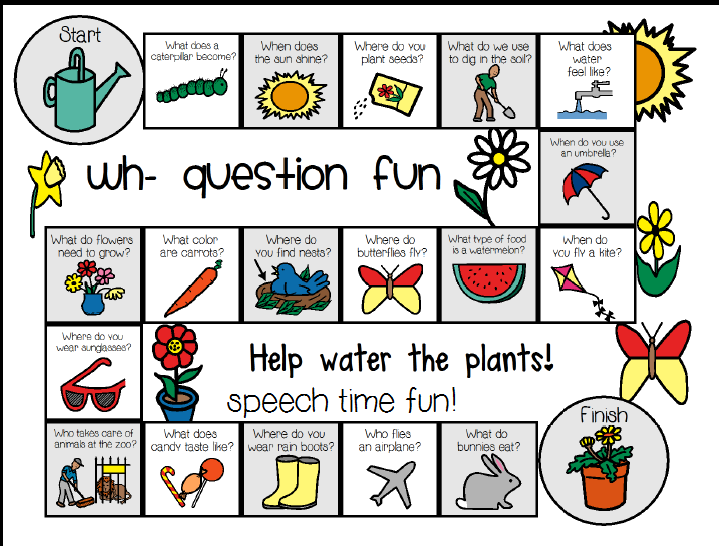 Colorful Counting Sticks
Colorful Counting Sticks Popsicle sticks should be a staple for anyone with kids around so setting up this game should be a breeze. Mark each stick with a number and let the little ones count out small rubber bands to add to the sticks.
Learn More: Mungfali
30. Paper Cutting Station
This is a fine motor skill activity that you can have ready for any time you feel like little hands need to be kept busy. Print out a few templates and have scissors in the box and let kids cut on the lines to improve their scissor skills.
Learn More: Playdough to Plato
31. Lock and Key Number Match
This is an innovative activity that will keep kids busy and teach them numbers and counting at the same time. Write a number on a lock and make dots on the keychain of the matching keys. Let kids match them up and unlock them. They can even count out some paper clips and add them to the lock to represent the numbers even further.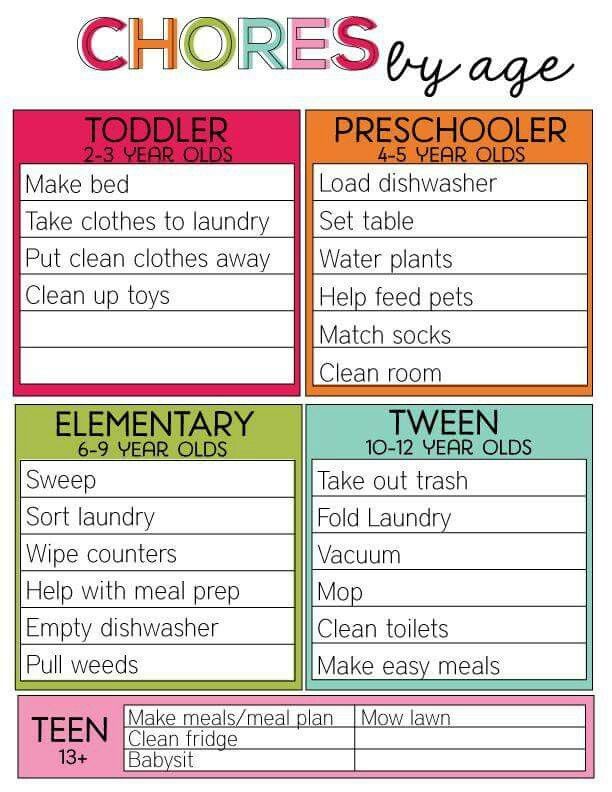
Learn More: ABC Does
32. Bubble Art
A bubble art activity is fun for young and old and you get to create unique paintings every time. Don't limit yourself to flowers either. These bubbles can be clouds, balloons, or even hair!
Learn More : A Piece of Rainbow
33. Wet Sidewalk Chalk Drawings
For generations, kids have been drawing with chalk on sidewalks. But did you know that the colors come alive when you soak the chalk in water? When kids draw with wet chalk their creations will be ultra-vibrant and impressive.
Learn More: Sugar Aunts
34. Ice Block Treasure Hunt
This is a guaranteed boredom buster for hot summer days. Freeze some plastic toys into a big block of ice and let the kids excavate them. They can use water and kitchen utensils to try and melt and crush the ice to save the toys from their icy prison.
Learn More: Inspired Home
35.
 Glow In The Dark Bowling
Glow In The Dark Bowling Lawn bowling is fun but why not take it up a level by turning it into glow-in-the-dark bowling? Snap a few glow sticks and pop them into plastic bottles filled with water for an exciting night-time activity that works on gross motor skills like hand-eye coordination.
Learn More: Passion For Savings
36. Rock Painting
Never forget about this classic activity for preschoolers! Rock painting can be adapted to any theme or can just be a creative outlet to create some fun garden accessories.
Learn More: Mrs. Plemon's Kindergarten
37. Yarn Painting
Yarn is another fun paintbrush alternative and yarn painting has stunning outcomes. Dip pieces of yarn in paint and lay them down on paper. Then drag the yard to make abstract patterns on the canvas. Eat your heart out Picasso!
Learn More: Busy Toddler
38. Clear Frame Portrait Drawing
View this post on Instagram
A post shared by Best Kids Activities (@keep.kids.busy)
This activity is great because it maximizes creativity while simultaneously being light on resources. A clear plastic lid and a dry-erase marker serve up tons of fun!
Learn More: @keep.kids.busy
39. Mystery Box
Tactile exploration is a key part of development at a young age and this mystery box is the perfect way to explore that sense. Add anything from fruit to toys, utensils, or foam letters to keep them guessing.
Learn More: Kids Art n Craft
40. Animal Rescue
Wrap up a few toys with rubber bands or string for effortless fine motor activity. If you can get your hands on some ocean creatures, you can tie it in with a lesson on pollution and saving whales and sharks!
Learn More: Team Cartwright
41.
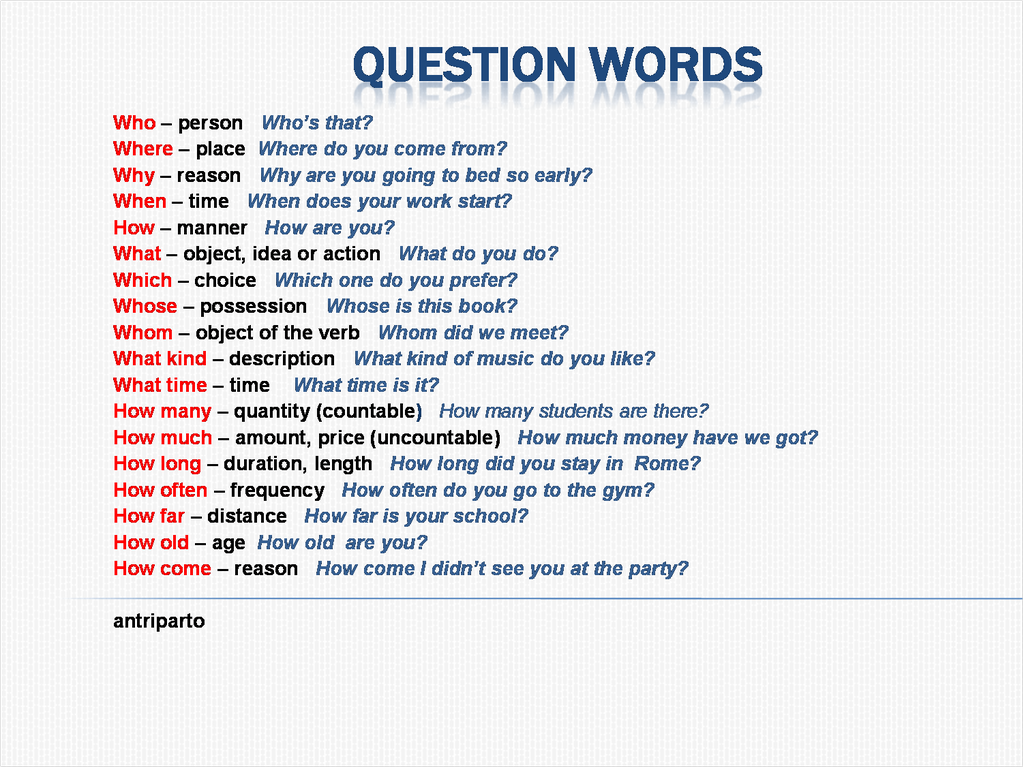 Animal Leg Match
Animal Leg Match This kindergarten activity takes a little preparation but it is a fun addition to animal lessons or an extension to an animal book reading session. Draw some legs and tails on clothes pins and let kids match them to the body cutouts.
Learn More: And Next Comes L
42. Move Like An Animal Cube
Create this fun animal movement cube to get kids moving at any time of the day. This gross motor activity for 4-year-olds will have them jumping, crawling, and hopping all over the place, getting rid of some excess energy.
Learn More: Choices for Children
43. Fine Motor Fishing
Magnet fishing is a classic kindergarten activity but making these pipe-cleaner fish and catching them with a hook is a fresh take on the game. Let kids sort them into colored paper rolls to up the difficulty level a little.
Learn More: Home School AEC
44. Animal Washing Station
This might seem like a cheap cheat to get kids to clean their toys, but this is actually a great way to practice fine motor skills.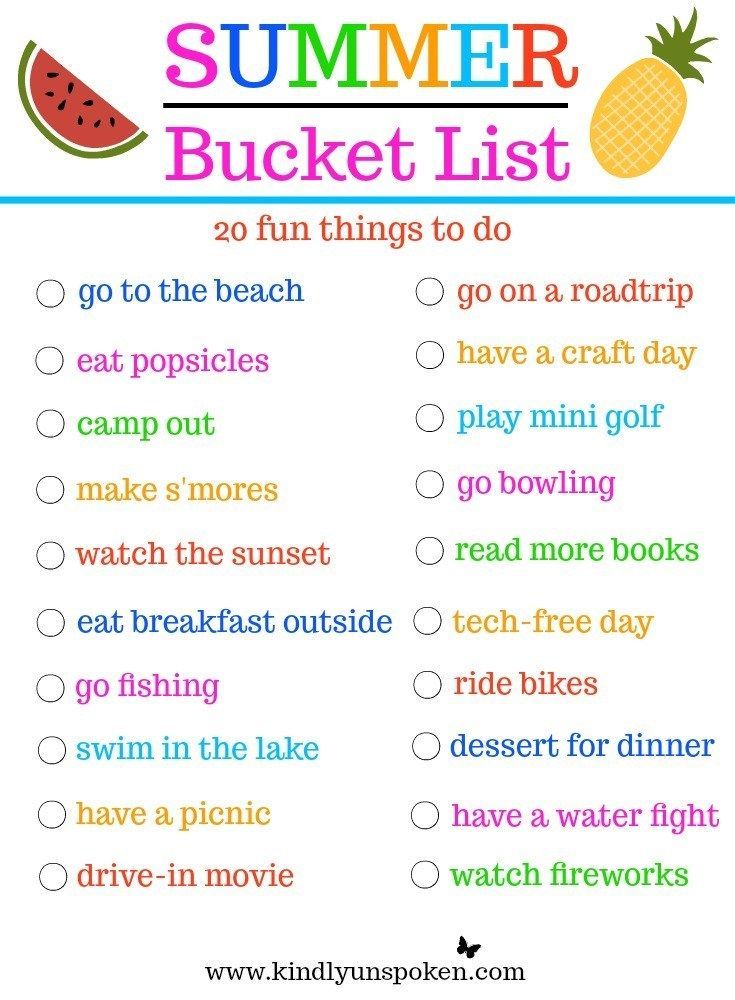 Kids need to get into all the nooks and crannies of their toy animals with a toothbrush, cloth, or even cotton buds to clean off all the mud.
Kids need to get into all the nooks and crannies of their toy animals with a toothbrush, cloth, or even cotton buds to clean off all the mud.
Learn More: Imagination Tree
45. Puffy Paint Art
Puffy paint art is fun but squeezing the paint out of the ziplock bag is a great exercise for little hands. You can draw the outline of a picture and they can follow along with the paint or they can unleash their creativity and draw their own from scratch.
Learn More: Artful Parent
Educational games for 4-year-olds
Engaging your child in an entertaining and useful business means not only providing the necessary conditions for all-round development, but also creating an atmosphere of love, unanimity and trust between him and his parents. Four-year-olds are independent, curious individuals with their own interests and needs. Due to the fact that kids cannot spend a lot of time outdoors (often there is no way for this), the question is brewing: what to do with a four-year-old at home?
What to look out for?
The first thing mom and dad think of is to put the baby in front of a TV, computer or laptop, give him some gadget: a variety of cartoons and games will captivate the child for a long period. However, it is important to remember that such spending time should be limited, as it will do more harm than good. In order not to harm the baby, but to make his pastime useful, it is necessary to take into account his age and other personal qualities, needs:
However, it is important to remember that such spending time should be limited, as it will do more harm than good. In order not to harm the baby, but to make his pastime useful, it is necessary to take into account his age and other personal qualities, needs:
- Four-year-olds prefer play activities the most. Any child development activity should turn into a game.
- In order for the muscles, tendons, bones, cardiovascular system to form and strengthen properly, children need physical activity.
- The kid needs to be given the opportunity to actively learn about the world around him and its laws.
- It is also necessary to conduct classes on the development of speech, replenishment of the child's vocabulary.
- Life skills must be improved.
- The game should be chosen in such a way that it will bring up a culture of behavior and communication skills in a four-year-old.
- The imagination must also be involved.
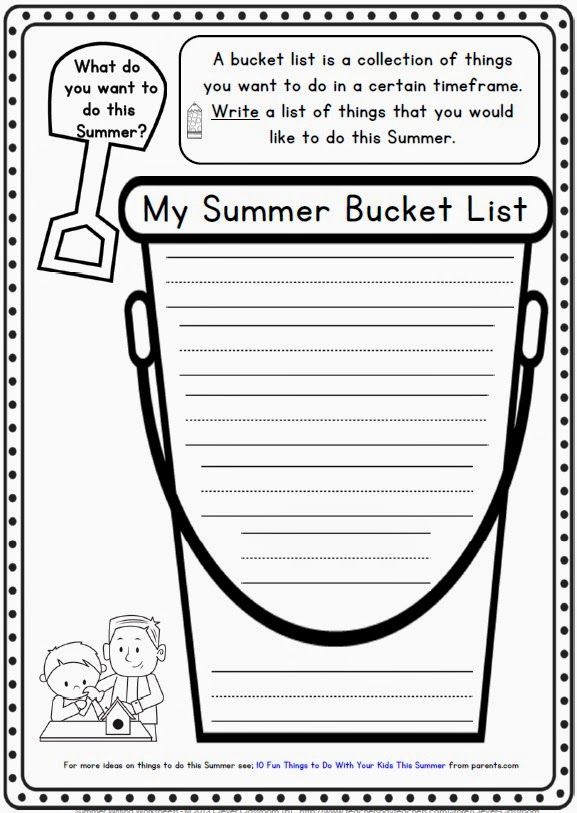
- Attention should be paid to creative activities that develop logical thinking, motor skills and imagination.
- In a playful way, the child must participate in the daily activities of mom and dad.
- Children of four love to actively communicate with their peers, so he needs to provide such an opportunity. First of all - role-playing games.
Summing up the above, the activities of a four-year-old should be varied. So, what can you do with a four-year-old child?
Active activity
Playing football, long jump or high jump in the apartment is not acceptable. But there are plenty of activities that keep your child physically active:
- Children's Library. The so-called disco for children with funny, imitation movements, pantomime. If other kids came to visit, you can make a competition. In order for young performers to have more interest, you can come up with some kind of prize for the winner.
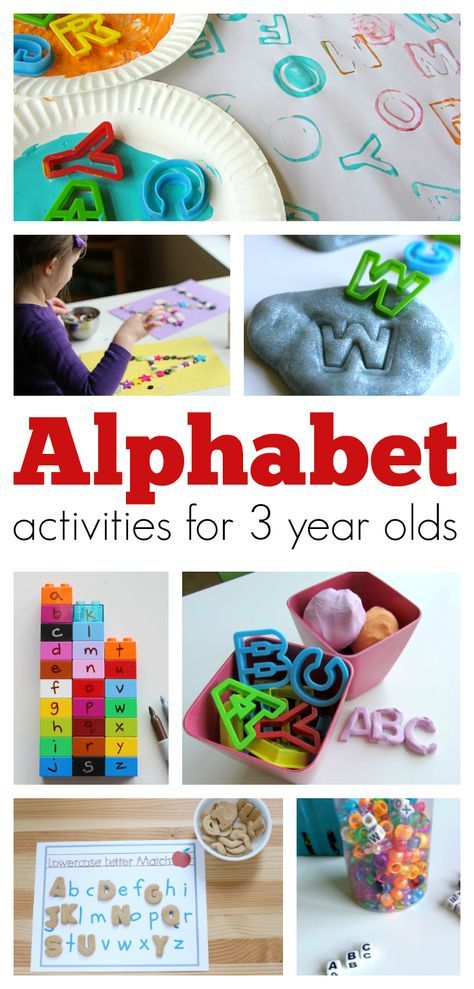
- Fun with balloons. There are a lot of options: which of the children will hold more balls, which of them will burst faster, who will stay in the air longer, etc.
- Games with a ball or fitball. You can throw the ball, chase it, catch it, jump on it. Another option is also possible - it all depends on the imagination.
- Blind Man's Buff. Adults and children can take part. Alternatively, hide an object.
- Basketball (children's version). A lot of space for the game is not required, but the child's interest will wake up. He will play with enthusiasm.
- Relay - around tables, pillows, chairs tied with ropes.
When playing such games, the safety of the child must be monitored. Children should not trip or bump into each other, slide on carpets or floors, and should also be careful not to accidentally break a mirror or anything of value, or injure themselves with fragments. The main thing when choosing a playing area is safety and the absence of traumatic objects.
Art and fine motor skills
There are many examples of how a child can develop fine motor skills. Most of these activities are creative activities. For example, design, mosaic, puzzles, modeling from various materials, different types of appliqué with scissors, needlework and its types.
Drawing is very popular. The child can be offered the following:
- drawing with various types of supplies - pencils, felt-tip pens, paints, crayons;
- stenciling figures and coloring them;
- tracing the contours of one's palm of one's arms or legs;
- put a coin under the paper and sketch it with a simple pencil;
- coloring pages;
- passing drawn labyrinths with the search for the right path with a pencil or pen;
- drawing by points.
The development of fine motor skills is also facilitated by drawing with sand, sorting through grains, etc.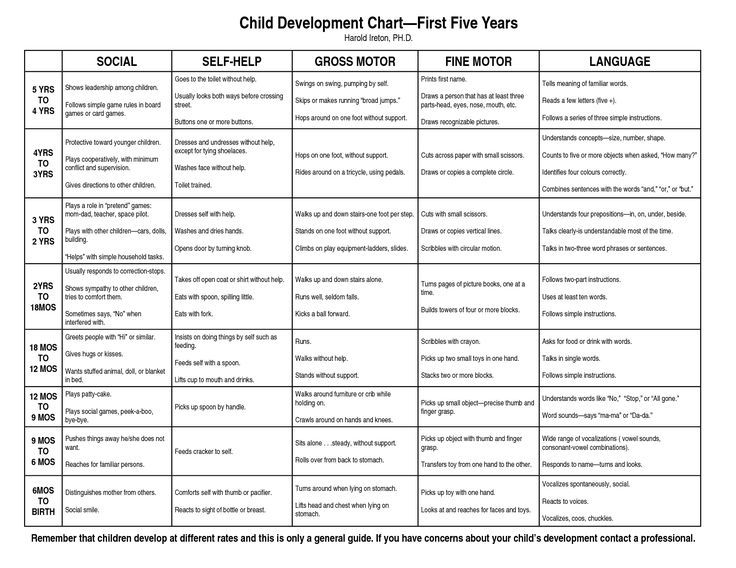
Fun for little experimenters
A baby's natural interest must be approved in any way. Young researchers can not only be entertained in different ways, but also broaden their horizons, develop fine motor skills, logical thinking and curiosity. These are the following methods:
- Drawing on kinetic sand. You can also sculpt any figures from it, consider how it pours over your hands.
- Toddlers show interest in adhesive tape. If a child is shown how he works, there is a great chance that he will stick everything to him.
- A figured hole punch can also captivate a four-year-old for a long time. It is fashionable to give the baby unnecessary magazines, newspapers. As an option, let him color the sheets, and then cut them into confetti with him.
- A magnifying glass is also a magic wand. The child will watch for a long time and with enthusiasm how objects increase under this glass.
- You can make a labyrinth out of unnecessary knitting threads.
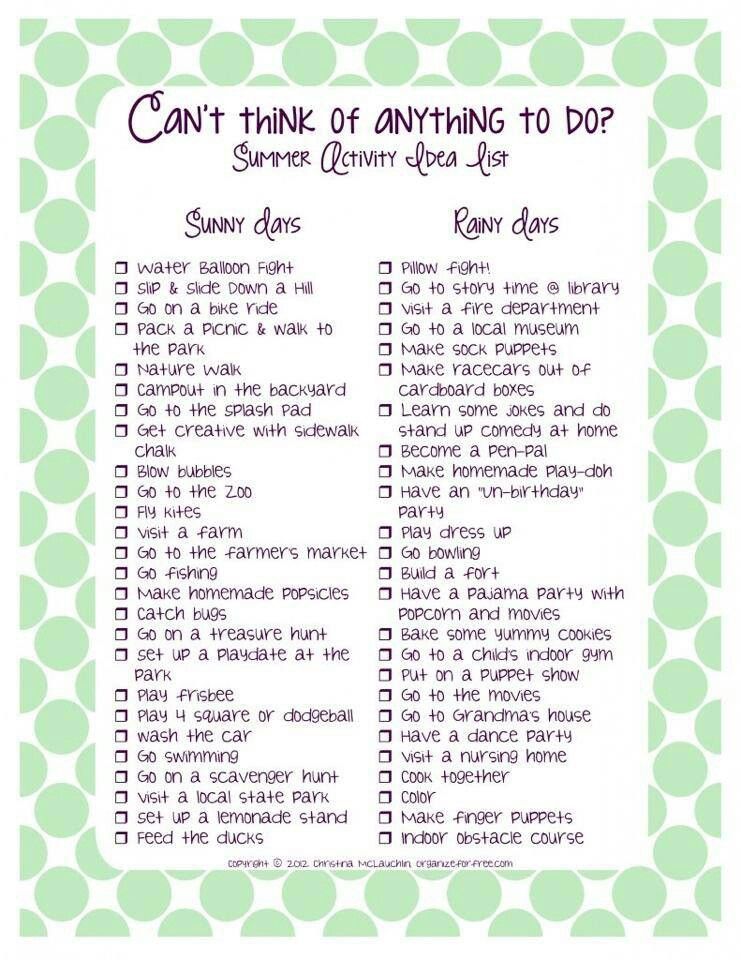
- Foamy water in a bowl filled with washcloths, sponges, and toys is a good place to explore. The basin can be replaced with a jar of soap bubbles.
- A business board made by dad will win the heart of not only his son, but also his daughter.
- You can use an old phone or a camera as a camera - the baby will feel like a photographer.
Any household object that will interest a four-year-old child will become an object for his research. Therefore, it is important to ensure that the child comes across only safe things.
Please note! Parents should always take part in the child's games - help, suggest, compete, offer options, set an example and be interested. This will create a sincere, trusting relationship, the child will see the best friend in the parent.
Speech and communication
These terms are inseparable: speech is needed for interaction in society, and society is an integral part of speech development. If we take into account the fact that the first society for the baby is his parents, then it is they who play the main role in his life. What influences the development of a child's communication skills? This is all that can create a situation of communication:
If we take into account the fact that the first society for the baby is his parents, then it is they who play the main role in his life. What influences the development of a child's communication skills? This is all that can create a situation of communication:
- collective reading of books, their discussion;
- compiling a story from a picture;
- learning poems;
- singing children's songs;
- inventing fairy tales;
- home puppet theater;
- games for the development of speech - which object is similar to another, true or false, what is superfluous, etc.
In addition, speech and communication are developed by a role-playing game with peers. Among the toys of the baby there should be such sets as "Hospital", "Kitchen", etc. For such a game, you can build a house from blankets, chairs, or purchase a ready-made children's tent.
If the mother has no time
If the mother is busy with her usual housework and cannot play with the baby, what should be done in this case? If you are smart, you can come up with a large number of things that the child can do on their own. At the same time, he will not only distract his mother, but also feel like an assistant. These are the following types of games:
At the same time, he will not only distract his mother, but also feel like an assistant. These are the following types of games:
- introduction to cooking - wash fruits or vegetables, mix ready-made salad, put cheese with sausage on bread, etc.;
- table setting - lay out accessories, napkins, bread, put a salt and pepper shaker;
- working with dough - if the mother has kneaded the dough, you can give a piece to the baby so that he can mold something;
- cleaning - if the mother is cleaning the house, the child can be entrusted with laying out laundry for washing, dusting (in places where he can get it), collecting toys in a basket, watering flowers;
- you can give the baby products such as peas, beans or pasta so that he sorts them or lays out a picture from them;
- if you give a child a thread and bagels (beads, clothespins), you can ask him to make a necklace for mom.
To occupy your child with something useful and necessary, it is not necessary to constantly be near him and play, give him a gadget or invent something impossible.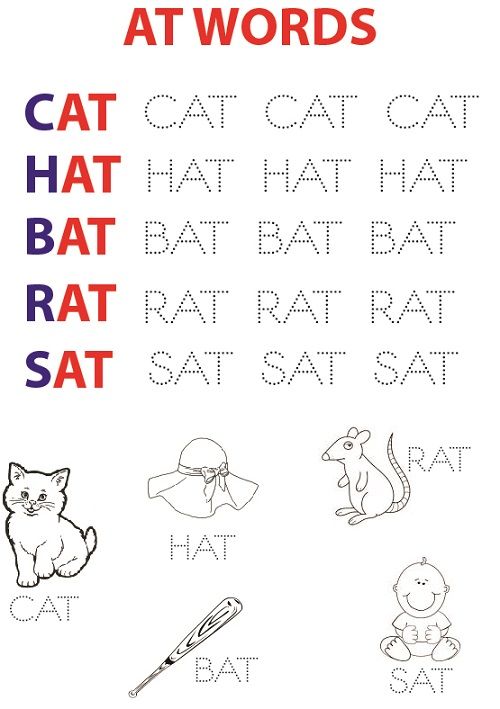 If you show a little ingenuity and patience mom and dad, both sides will find a way out of the situation.
If you show a little ingenuity and patience mom and dad, both sides will find a way out of the situation.
Educational ☝️ activities for children aged 3 4, interesting activities and ✍️ developmental activities for a child at home ☀
Content
- What features of this age group should be taken into account
- What is interesting for babies aged 3-4 years
- What types of activities can be used at home
- What to do with a baby outside
- What to do with a baby in the country
- What to do baby in the park
- How to play with a baby in a winter park
- How to keep a child 3-4 years old on the road
- Tips for parents on organizing classes
- What parents of a 3-4 year old baby should know
- Development of speech
- Development of motor skills
- Mathematics
- Music lessons
- Development of logical thinking
- Drawing
A child at the age of 3-4 years becomes very active.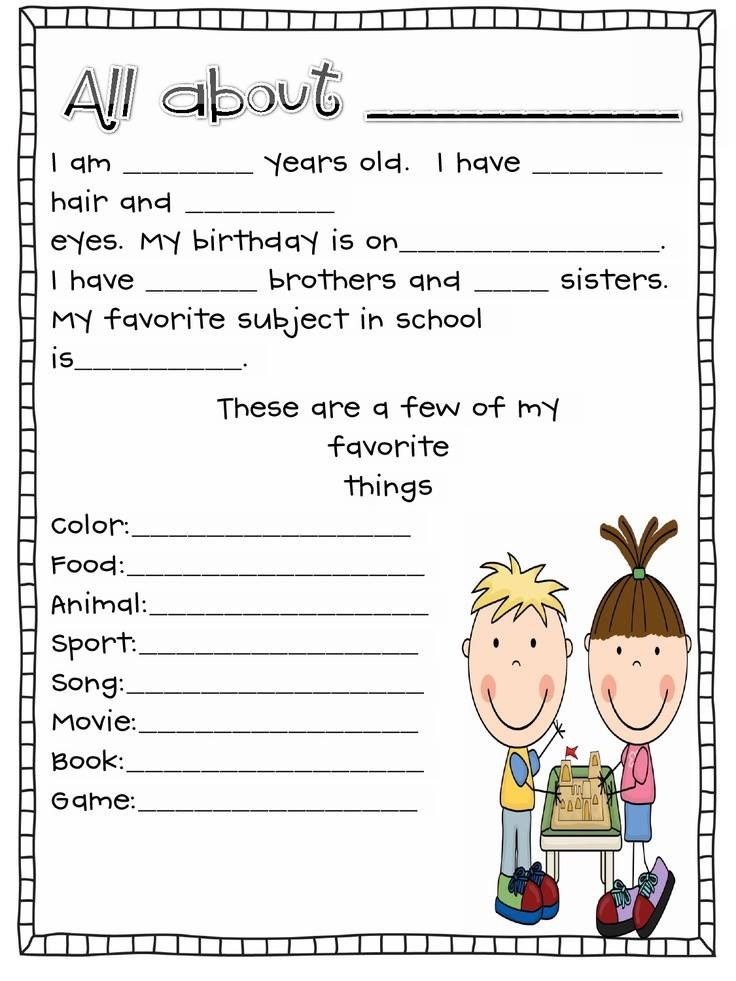 Many mothers are tormented by the question: “What to do with your child?”. After all, the kid should spend time with benefit. At this age, children need to develop, instill in them communication skills.
Many mothers are tormented by the question: “What to do with your child?”. After all, the kid should spend time with benefit. At this age, children need to develop, instill in them communication skills.
Of course, children are all different in character and temperament. Someone aged can play with one toy all day, while someone needs variety in activities.
Please note! When taking a child of 3-4 years old at home with any business, be sure to be there. Babies at this age should not be left unattended. Be nearby, organize your affairs so that there is a small distance between you and the child.
So, let's take a look at which developmental activities for children aged 3 and 4 are most suitable.
What features of this age group should be taken into account
3-4 years is the period when the baby begins to realize himself. He has a more perfect system of coordination of movements, he begins to move more smoothly.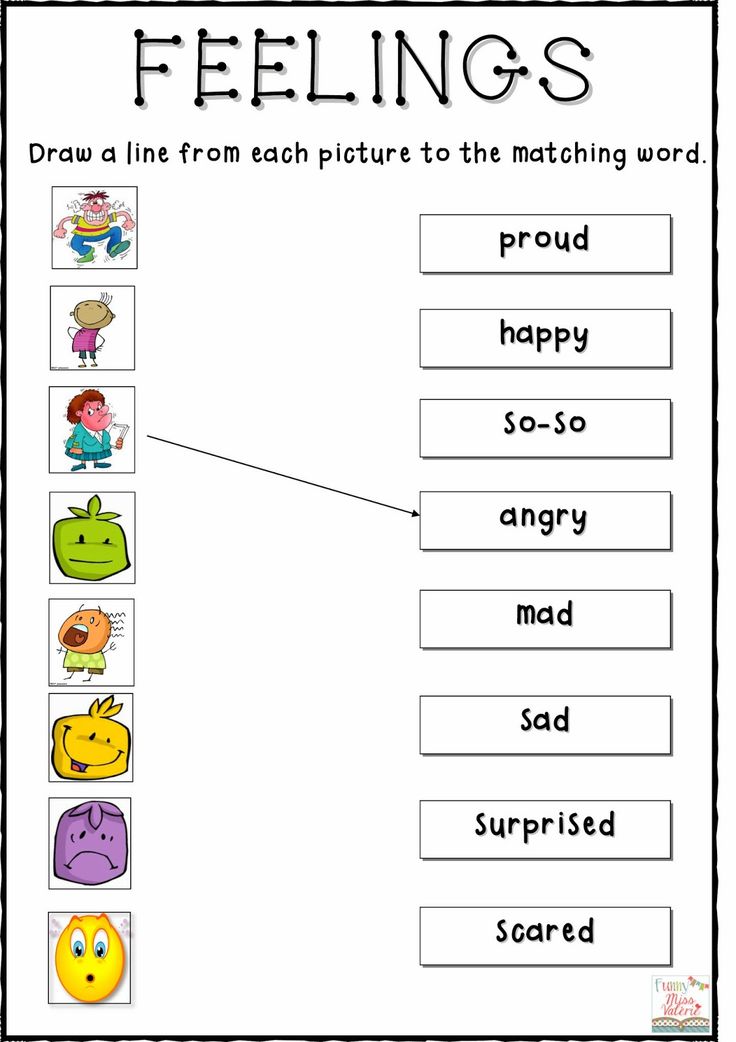
Children develop musical talents and like to dance and sing.
Toddlers can already play in company, keep themselves busy with games, they show interest in construction, vocabulary is growing rapidly. The child begins to use the words that he heard from adults, turns of speech become more difficult, he begins to express his opinion.
Children at the age of 3-4 are already playing with peersDuring this period, relationships with peers and adults are formed. He becomes a participant in joint games, begins to perceive the rules of behavior in games.
Children at this age have many questions, they gain life experience. The information that a child can absorb during this period is simply colossal in its volume.
And, of course, the task of parents and teachers is to choose such educational games that would help the formation of the personality and skills of the child, both in a children's institution and at home.
Things for 3-4 year olds
Age 3-4 is a great time to develop children's creativity. You can sculpt from plasticine or salt dough. For a child aged 3-4 years, drawing classes are interesting. Young artists with the same pleasure draw with pencils and paint with paints, they like felt-tip pens and colored crayons.
Games for the development of hand motor skills and imaginationPay attention! Children at this age cannot draw on their own, but they can color to their liking and within their strength. There are special coloring books on sale, you can print coloring pages from the Internet.
Parents of artists need to be careful, because at the age of 3-4 years, children like to draw not only on paper. They like walls and doors. Drawing boards can be an interesting option. It is convenient to install such a board at home - it takes up little space.
A great idea - a mosaic - a game for creativity At this age, children can be occupied with constructors.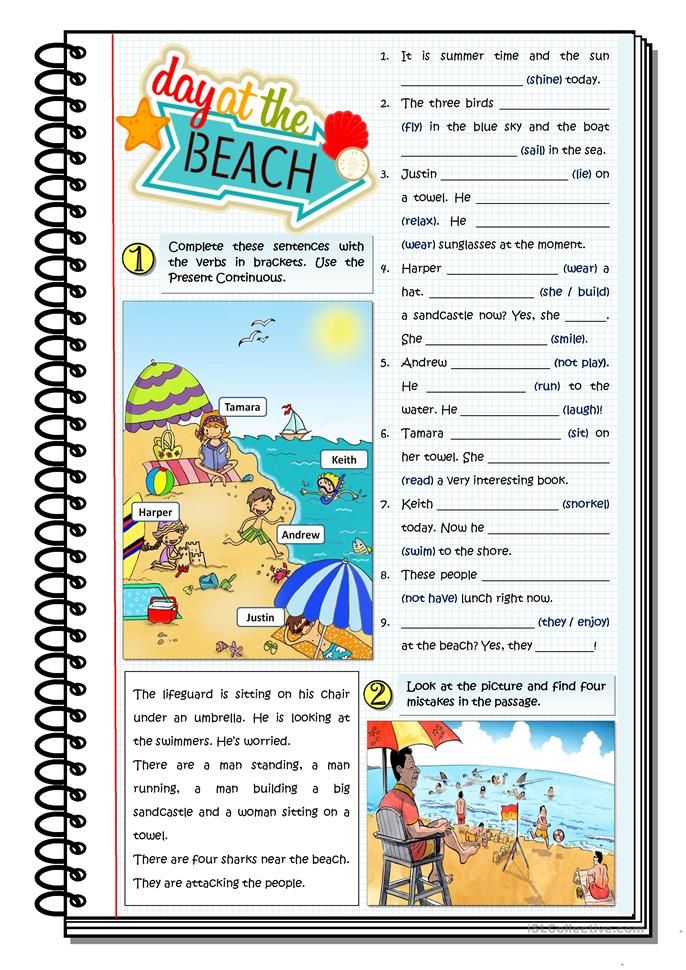 For 3-4 years, constructors made of plastic parts are suitable. Children are especially interested in towers and houses, which they build with pleasure. At home, you can allow children to create houses from improvised materials - pillows, chairs, blankets.
For 3-4 years, constructors made of plastic parts are suitable. Children are especially interested in towers and houses, which they build with pleasure. At home, you can allow children to create houses from improvised materials - pillows, chairs, blankets.
When a child reaches 3-4 years of age, parents begin to think about additional developmental education.
Moms and dads choose developing activities, circles or sections for their crumbs. Children are taken to swimming, gymnastics. If you start studying a foreign language, the result will be very good.
But you can also work with children outside the home. A child of 3-4 years old is useful to stay in the air.
All children love playing in the sandbox.Outdoor activities are varied. Children of this age are attracted to the sandbox, where they play and build with pleasure. A playground is a place where a child can play and relax in comfort.
Fine motor skills: 3-4 year olds enjoy laying out mosaic patterns and looking at pictures in books.
They are interested in moving toys.
Activities you can do at home
Here are some educational activities for 3 and 4 year olds you can do at home:
- Three and four year olds love to draw on paper the world around them. Prepare pencils or felt-tip pens for drawing with your child. Discuss what he wants to draw, ask what color the objects in his drawing will be. Give him large sheets of paper or even a piece of unwanted wallpaper. The scale will capture your baby, and he will be busy for a long time.
- Before you give pencils, offer him to work with a sharpener - then he will draw more enthusiastically.
- You can keep your child busy with the hole punch. Show how a hole puncher works, let him make confetti from old magazines for the New Year holidays.
- Fun for kids and cutting with scissors. By the age of four, children can cut out simple figures. Make stencils of geometric shapes. Let it cut. And then build an application with it.
 This is a great activity for a child of 3 years old at home - developing.
This is a great activity for a child of 3 years old at home - developing. Developing board can keep a child busy for a long time
- You can give your child stencils of various objects (available on sale, you can make your own from cardboard) or letters. The kid circles the stencil, and then paints.
- It is difficult to force children to sculpt from plasticine alone. Roll up a lot of sausages for him - let him cut into pieces, and then lay out the pattern on a sheet of cardboard.
- Pull the rope, give clothespins and let him hang his things, and then collect them.
- Children are fascinated by working with carbon paper. Show him the technology. Be sure - your child will be engaged in work with interest.
- Kinetic sand will help out parents, children like this activity.
- You can buy stickers for children and give them an album - the child will stick until he uses all the stickers.
- Children can also be occupied with drawing by dots.
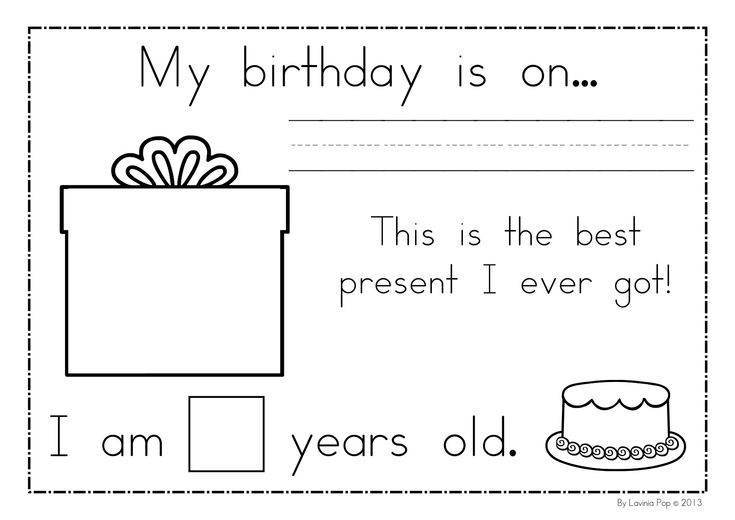 Download these pictures from the Internet.
Download these pictures from the Internet. - Children may be interested in the magnifying glass. Give him small pictures - let him look through a magnifying glass.
- There is an interesting invention - puzzles. Pick up your baby sets according to age and interests. It will take a very long time, rest assured.
Wooden puzzles for children 3-4 years old
Almost all the proposed options are educational: kids are not only busy with exciting and useful activities.
If the mother is making something out of dough, give the child a piece so that he can contribute.
There is another interesting activity: take large beans, pasta and some peas, move them around and have your child sort them into three containers. Play as needed help around the house. Be sure to praise.
In general, the kitchen attracts both girls and boys - fantasize, and your little helper will be happy to complete tasks.
Children will be happy to help in the kitchenWhat to do with the baby outside the home
Often, being away from home, kids suffer from the fact that they do not know what to do. Here are some options for developing activities for children 4 years old and 3 years old.
Here are some options for developing activities for children 4 years old and 3 years old.
In the summer, children aged 3-4 are attracted to the sandbox. All sand games are educational. Building different figures, breaking through the grooves, the baby learns shapes and volumes through the hands. Exposure through the hands has a beneficial effect on speech activity. It is interesting and very convenient to play on the sand:
- Wet sand can be molded into many figures using molds. For example, invite your child to create a sand park or make pies for a puppet dinner;
- on a flat surface, you can "draw" a picture of the sand.
Place plastic skittles or bottles in the clearing and let the child learn to "dribble" the ball between them.
A great idea for a cottage - homemade tracksThere is a mini-ring on the playgrounds, give the ball and offer to throw it into the basket, moreover, from different distances.
Give your child colored crayons to draw on the pavement.
Show how to draw cells - the kid will be happy to jump on them.
What to do with your baby in the country
It is easy to keep your baby busy in the summer:
What to do in the park
In the autumn park, invite your child to collect a collection of autumn leaves. Before the walk, prepare a bag or box where he will put his treasures.
Another variant of an outdoor game is to offer the kid jogging, for example, to a green bench, to a large stone, to a mountain ash, etc.
How to play with your baby in the winter park
Here are a few options:
- Draw a circle in the snow, mark the center and arrange a competition to hit the target with snowballs.
- Play the cunning fox that covers its tracks with its tail. Together with the child, find a branch. The kid will walk in the snow and cover his tracks with a twig.
- There is also an interesting game "Who walks how" - the kid depicts the gait of different animals, jumps like a hare, runs like a wolf or a bear.

- Draw patterns or bird tracks on the snow.
- You can run along the paths of the park and look for trees that look like different animals.
- At this age, kids begin to learn letters - trample them on fresh snow.
Winter activities - snowballs, sledges, snow removal
How to captivate a child of 3-4 years old on the road
It happens that a family with a child of this age must go on a trip. It is difficult for restless kids to sit still in transport. What can distract him?
- In the car, you can play like this: who will be the first to see the car, for example, red or blue roof.
- You can simply ask to name the objects that he sees.
- Invite your child to observe the clouds - what they look like, how they change.
- Prepare a box of small toys for him to sort and play with. Ask to talk about each.
- Play yes-no. For example, does the kitten bark? The child answers "no".
- Read poems on the way, remember songs for children.
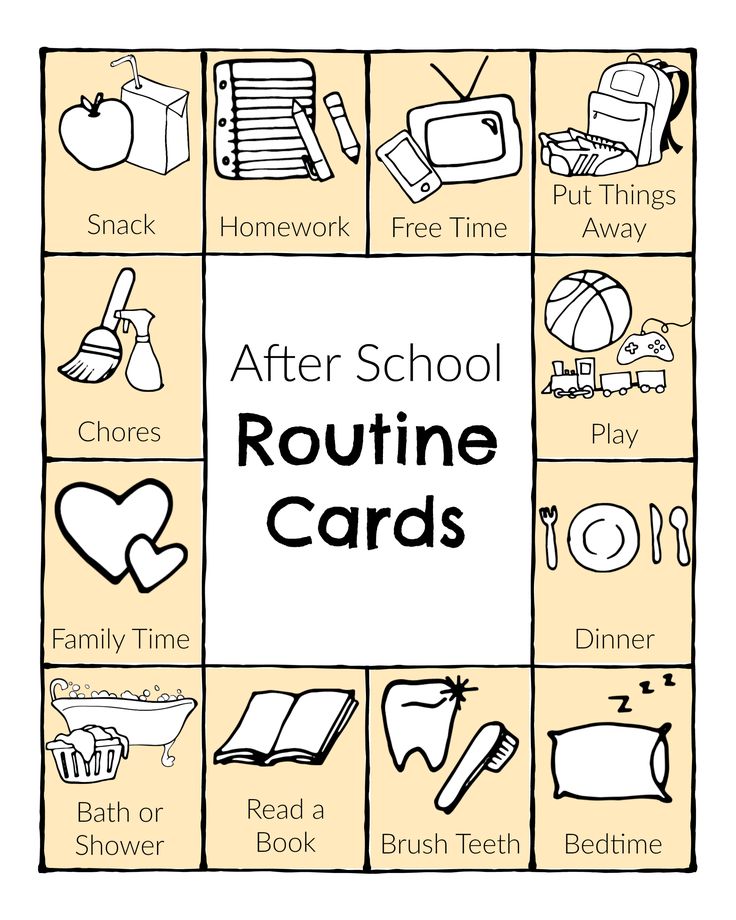
You can safely take felt-tip pens and albums on the train - let the child draw what he sees through the window or depict the train. Give your child a wet wipe to wipe the table and doors.
On the plane let the child look around. It is better to choose places for children near the aisle. So there will be room to stand up if needed. Show him the pillow, the straps, the porthole, the folding table.
You can keep your baby busy with magnetic puzzles - they are designed specifically for trips - they will not crumble. Look in children's stores for games on the road - these are cards and special tasks.
Must Read: How to Develop Creative ⚱️ Imagination in Preschoolers
Tips for Parents on Organizing Classes
Here are some good tips for parents:

The playing area should be comfortable
What parents of a 3-4 year old baby should know
This is:
- For a baby at this age, peace is an opportunity to move, be active.
- Of course, classes and tasks should be gradually made more difficult, but still, you should also return to simple-type exercises. For example, if a child is sick, he feels unwell, then there is no need to come up with difficult tasks for him.
- Please note that the child in this period of life endows inanimate objects with consciousness.

- The child is developing an understanding of the world, so try to ensure that the fundamental concepts are formed correctly.
- Do not rush the baby - he will gradually understand and learn everything.
Speech development
At the age of 3-4 children develop intensive speech - it becomes more complex and expanded, its vocabulary changes. The sentences are getting longer and more complicated. Speech development classes are necessary to expand vocabulary, improve conversational skills, develop the ability to formulate and coherently express one's thoughts. Children learn to build grammatically correct sentences, including complex ones, use prepositions and decline words. At 3-4 years old, many children know and use polite words in speech - “thank you”, “please”, “hello”, etc.
Exercises for the development of speech of younger preschoolers:
- compiling a short story based on a plot picture;
- description of the item from the picture;
- grouping items by feature;
- games using prepositions - moving an object on the table, under the table, etc.
 ;
; - study of the characteristics, signs and properties of objects from pictures;
- grouping of objects by purpose;
- retelling of a short fairy tale.
Also, the speech development program for children 3-4 years old should include games that introduce the child to the forms of words in the plural, develop skills in the correct use of forms of verbs, pronouns and prepositions. Assignments should be interesting and appropriate for the age of the child.
At the age of 3-4, children may experience problems in the pronunciation of certain sounds, so articulation exercises will be very useful. You can study at home, with the help of special literature.
Classes for speech development:
Photo: vseprorebenka.ru
Read also: The development of thinking in children and its role: Exercises and tasks for schoolchildren and preschoolers
9000
9000 9000 9000 9000 9000 9000 9000 It is desirable to start developing fine motor skills from an early age, as it has a significant impact on the development of speech, which in turn is one of the most powerful factors in the overall development of children. Moreover, fine motor skills are closely related to such mental processes as attention, thinking, coordination, imagination and memory. Exercises for the development of fine motor skills in children aged 3-4 years are very important, since in the future accurate, well-coordinated actions of the fingers and hands will be necessary to master the skill of writing, drawing, household needs (dressing, combing, etc. ).
Moreover, fine motor skills are closely related to such mental processes as attention, thinking, coordination, imagination and memory. Exercises for the development of fine motor skills in children aged 3-4 years are very important, since in the future accurate, well-coordinated actions of the fingers and hands will be necessary to master the skill of writing, drawing, household needs (dressing, combing, etc. ). Exercises for the development of motor skills of preschoolers:
- finger gymnastics;
- modeling;
- applications;
- drawing;
- various graphic tasks - hatching, stroke;
- games with lacing.
Children aged 3-4 usually pay attention to bright objects and pictures, so it is advisable to use interesting didactic material in the process of studying with children both in preschool institutions and at home.
Motor activity in pictures
Interesting: How to help your child speak. If you have already tried everything, but nothing helps
If you have already tried everything, but nothing helps
Mathematics
At 3-4 years old, most children can count to 5, understand the concepts of “big”, “small”, “top”, “bottom”, they know simple geometric figures.
Exercises:
- count the number of certain objects in the picture and find the corresponding graphic representation of the number;
- selectively count only apples or only pencils;
- show the smallest and largest item in the picture;
- indicate shapes in the picture - a circle, a square and a triangle.
Tasks that require perseverance and concentration of attention from children should be alternated with active, outdoor games in order to avoid overworking the child and maintain interest in classes. At 3-4 years old, it is difficult for children to keep their attention in one lesson. It is necessary to take this feature into account and develop a training program in accordance with it.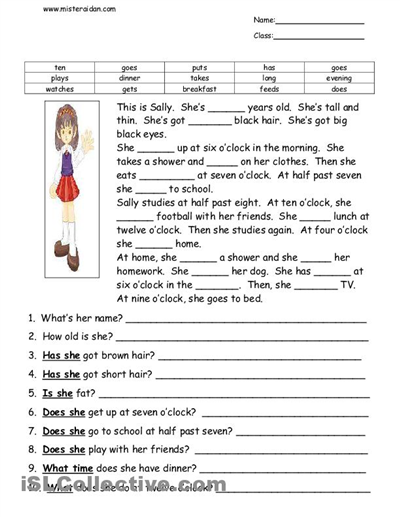 At home, you can teach a young child elementary mathematical operations by doing everyday things and using improvised materials.
At home, you can teach a young child elementary mathematical operations by doing everyday things and using improvised materials.
Activities for developing math skills.
Interesting: How to help your child fall in love with mathematics: 8 ways to turn boring into exciting
Music lessons
Music lessons are very important for the full and comprehensive development of children 3-4 years old. They develop auditory attention, the ability to feel the rhythm and navigate in space. Children learn to express the character and mood of music through movements and facial expressions. The musculoskeletal system, plasticity, and coordination of movements develop.
While dancing, children not only master various movements, but also create a certain artistic image, taking into account the nature and mood of the piece of music. Dance is an excellent means of early aesthetic and artistic development of a child. Rhythm classes are recommended to be included in the training program for 3-4 year old children with intellectual disabilities and speech problems.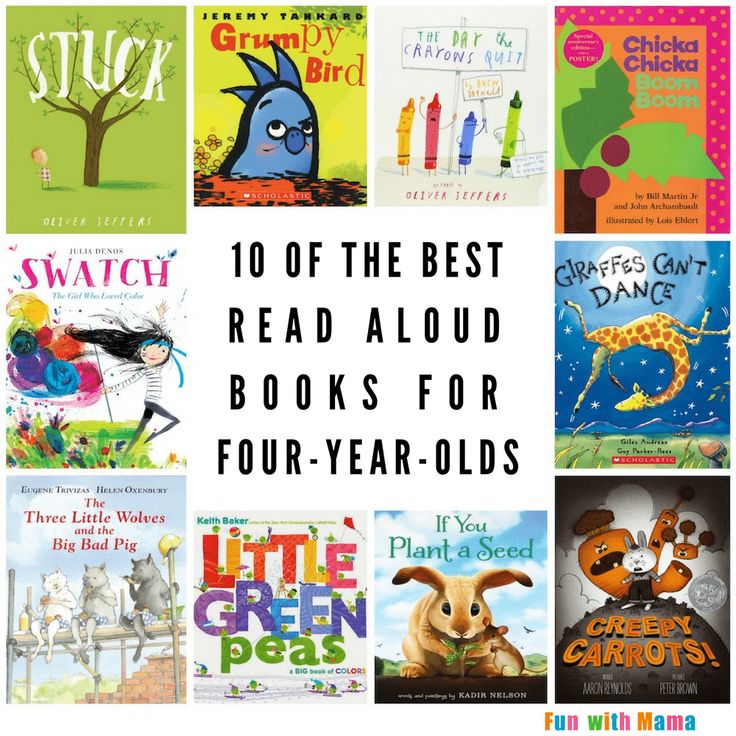 Classes include:
Classes include:
- simple speech and movement exercises;
- songs, poems;
- finger and articulation gymnastics;
- dances with a well-defined rhythm;
- the study of musical instruments and their sound;
- outdoor games.
Dancing and simple dance exercises are effective methods for training the child's body. They help relieve emotional stress, relax, develop a sense of rhythm, contribute to the formation of good posture and gait, dexterity and smoothness of movement. Almost all children love to dance from an early age, so classes bring them a lot of positive emotions and cheer up.
Tasks:
Read on the topic: The influence of music on child development
The development of logical thinking
logical thinking develops. At 3-4 years old, children, as a rule, are able to assemble puzzles or cut pictures from 3-4 parts, identify an extra object in a group or find a pair for an object, know some professions, types of transport, navigate the time of day.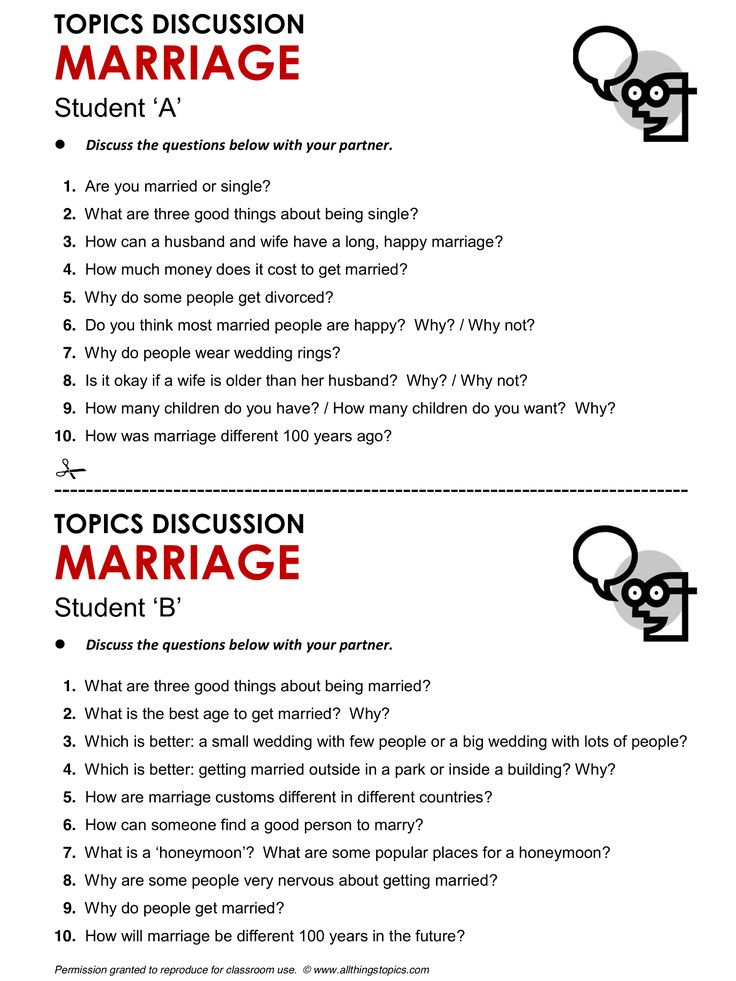
Exercises for the development of logical thinking:
- find differences in two similar pictures;
- identify items in the pictures that belong to the same group - dishes, clothes or toys;
- compare objects by size, color and shape;
- assemble a simple picture from 3-4 parts;
- identify similarities and differences between two subjects.
Logic games teach a child to compare objects, analyze their properties, establish cause-and-effect relationships and make their own conclusions about various phenomena. During the game, the child learns to calculate the course of events and draw conclusions.
Tasks:
Interesting: The development of logic in children 5-8 years old. Oral activities that can be done on the go
Drawing
Drawing activities are good for developing motor skills, imagination, creativity, fantasy and imagination. In the process of drawing, the child gets acquainted with different colors, experiments with lines and shapes, and studies the properties of materials.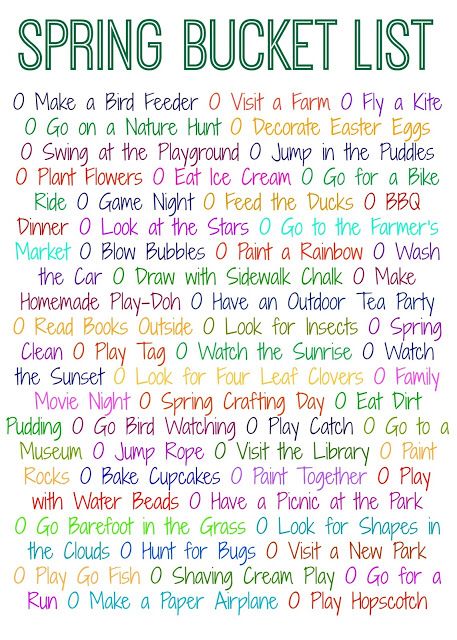 For children aged 3-4, this is especially important, since it is at this age that children learn the simplest mathematical concepts, get acquainted with the shape, size and color of objects.
For children aged 3-4, this is especially important, since it is at this age that children learn the simplest mathematical concepts, get acquainted with the shape, size and color of objects.
Exercises:
- draw in points;
- color according to the pattern;
- hatch.
Drawing is an exciting, interesting activity that develops artistic taste and enriches children's knowledge. It helps to prepare the child's hand for writing and introduce him to the basic geometric shapes.
Classes with children of 3-4 years old, both in a preschool institution and at home, should be held in a playful and friendly atmosphere. Assignments must be age appropriate. It is very important to encourage efforts and help the baby if some tasks cause him difficulties. It is necessary to form a positive attitude towards classes in the child in order to maintain cognitive activity. In view of the peculiarities of the development of children aged 3-4 years, it is recommended to alternate mental, creative and physical activities in order to prevent overwork of the child.